Coral Snake
- Uruguayan coral snake - Micrurus altirostris
- Mesopotamian coral snake - Micrurus baliocoryphus
- Brazilian coral snake - Micrurus brasiliensis
- Diana's coral snake - Micrurus diana
- Cerrado coral snake - Micrurus frontalis
- Argentinean coral snake - Micrurus pyrrhocryptus
- Micrurus silvae
- Micrurus tricolor
Appearance
All coral snakes in the micrurus frontalis group have alternating bands of red, white and black in the following patterns:

or

The variations in species are largely determined by the width of these bands relative to each other.
Aside from their bright colours as described above, coral snakes can be distinguished by their blunt rounded head and nose, small eyes, and the lack of any noticeable distinction between their head and neck. The head and tail appear similar, partly as a strategy to fool potential predators into attacking the wrong end - but the tail can be distinguished by its pointed end. Coral snakes are quite small - ranging from 50 cm to 1.2 m.
Venom and Bites
Their small size and decorative appearance might make them seem appealing - but they have a highly potent neurotoxic venom injected through grooved, fixed front fangs. This venom affects the brain and nervous system, and can lead to respiratory failure or cardiac arrest if left untreated. However, bites are extremely rare as coral snakes almost always flee whenever confronted by humans. They're not naturally aggressive or prone to attacking unprovoked. Biting is a last resort defensive measure occurring as a result of the snakes being unwisely handled or accidentally stepped on. The snake's small size means that bites mostly occur on the finger, toe or webbing in between. A good pair of boots is often the best defence, as their small fangs are unlikely to penetrate thick rubber or leather. Not all bites inject venom, but if they do, they result in death around 25% of the time if untreated. Even when treated, these bites can take a long time to heal, with victims sometimes experiencing scarring and twinges of pain in the wound for months afterward.
Behaviour and Habitat
Coral snakes lead a secretive life. They largely stay hidden away from potential predators by sheltering under vegetation, or burrowing under loose soil and leaves. They're primarily nocturnal but can also sometimes be found during the hours of dawn and dusk. Although corals generally prefer dry forest and grasslands, they're also adapted to the survive in the pantanal - able to cross small stretches of water to find safety on high ground and in trees during the region's seasonal flooding.
Unlike many other snakes, corals actively hunt for their food rather than hiding and waiting for their prey to pass by. They feed on amphibians and small reptiles, such as skinks, rodents, nestling birds, and even other smaller snakes. Prey animals are killed with a poisonous bite then swallowed whole, head first.
Reproduction
Southern coral snakes reach maturity at one to two years. Although mating can occur throughout the year, it's primarily in spring or autumn to avoid temperature extremes. Around 30 to 40 days after mating, the female builds a nest - usually in tree stumps and fallen logs offering a good protected spot. Here, she lays a clutch of 2 to 12 eggs. The incubation period depends on temperature, but is generally 60 to 70 days. When the eggs hatch, the hatchlings measure 40 to 55 cm (16 to 22 inches) in length. Should these young survive into adulthood, their life expectancy is about 10 years. Despite their venom and bold warning colours, coral snakes can be preyed upon by hawks and vultures which act swiftly, attacking the head before the snake has a chance to bite.
Scientific Name
Micrurus frontalis

Local Name
Coral verdadeira
(true coral snake)

Description
Several variations, reaching up to 1.2 m. Varying arrangements of red, black, and white bands. False coral snakes can be differentiated by the shape of the head.
This map shows the distribution snakes from the genus micrurus, or southern coral snakes. Micrurus frontalis is the species most likely to be present in the Pantanal - but is rare and unlikely to be encountered due to its shy and secretive nature.
True and False Coral Snakes
True coral snakes, and various false coral snake mimics can appear very similar. In fact, that's the idea - since if a relatively innocuous snake can mimic the colours then there's a good chance it will be left alone by predators. Two notable mimics are the Brazilian Calico Snake (Oxyrhopus trigeminus) and Tri-colored or Banded Hognose Snake (xenodon [lystrophis] pulcher). These are a similar size and closely match the coral snake's coloration - although:
- A true coral snake has a blunt rounded nose, small eyes, and no visible distinction between head and neck.
- A false coral snake may have less distinct bands (just covering the back, and not wrapping around the underside), and a larger head relative to the size of it's body.
Some false coral snakes, such as Calico snake still use venom to kill their prey, but aren't sufficiently toxic to be dangerous. In some ways, their preferred habitat and prey also mirror those of the snake that they are mimicking. One mimic within the Pantanal region, the Mato Grosso Burrowing snake (Phalotris matogrossensis) was discovered as recently as 2005. This is a comparatively rare species, which has a red body, with a pattern of black and white bands covering only the head area.
A Calico snake (Oxyrhopus guibei), which is one of several false corals. It has a larger head, larger eyes, and the coloured bands don't extend around the underside. Photo: Shutterstock/Ryan M. Bolton.
Threats and conservation
Although coral snakes are rarely seen, they're not considered endangered. Instead, the lack of sightings is likely due more to their secluded lifestyle. There aren't any formal estimates as to their wild population - but the limited range of some species within the micrurus frontalis group means that some could come under pressure. Habitat loss resulting from the destruction of natural grassland and woodland areas for agriculture such as cattle and soy has increased significantly in recent decades. Increased human presence also lessens the chance of survival for these snakes as they (and their mimics) are often killed on sight due to people's fear of their venomous reputation.
Quick Facts
- Coral snakes spend much of their time underground during the day, in holes or tunnels dug by other animals. They can be also found hidden under leaf litter, or in tree stumps.
- Hatchings have the same bold coloration as adults, and are fully venomous.
- Coral snakes are fixed-fanged, meaning they're unable to retract their fangs like rattlesnakes or lanceheads.
- Because of the rarity of their bites, stocks of coral snake anti-venom in the US had been left to expire. Pfizer, the manufacturer of the product called Coralmyn, claimed the $5-$10 million required to produce a newer synthetic anti-venom was simply uneconomic given the very small number of cases each year. Fortunately, many Latin American countries, including Brazil, manufacture their own supplies, and which are more appropriate for the local species.



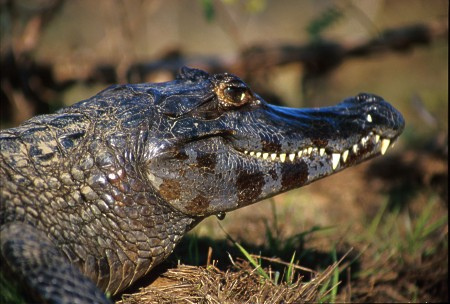
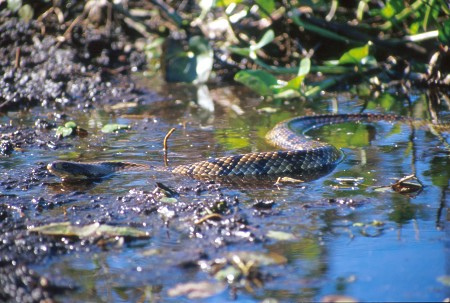
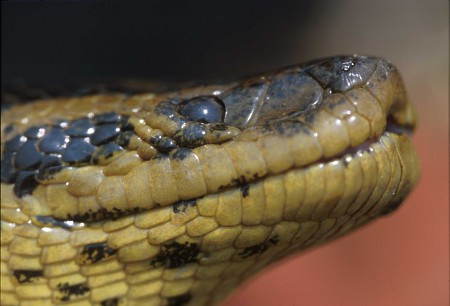


Banner image: Micrurus frontalis (Fábio Maffei).
Footer images: Jacaré; Anaconda; False Water Cobra (Andrew Mercer)
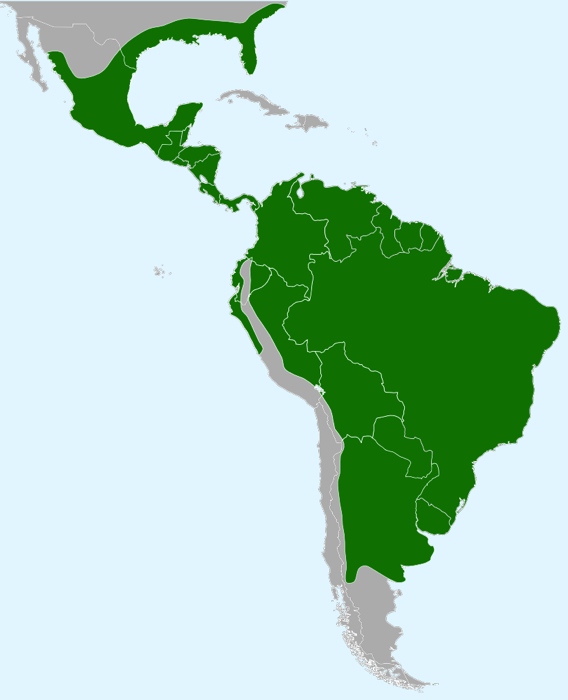
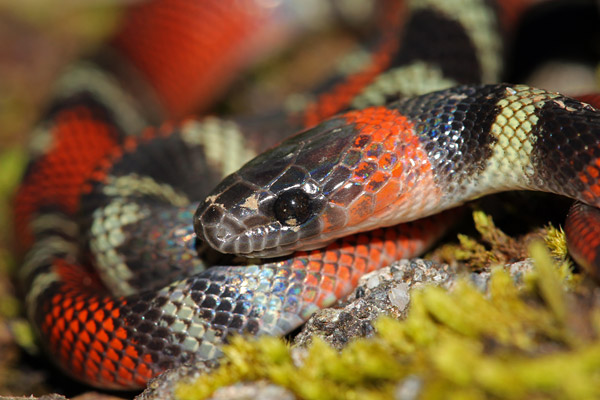
Pantanal Escapes